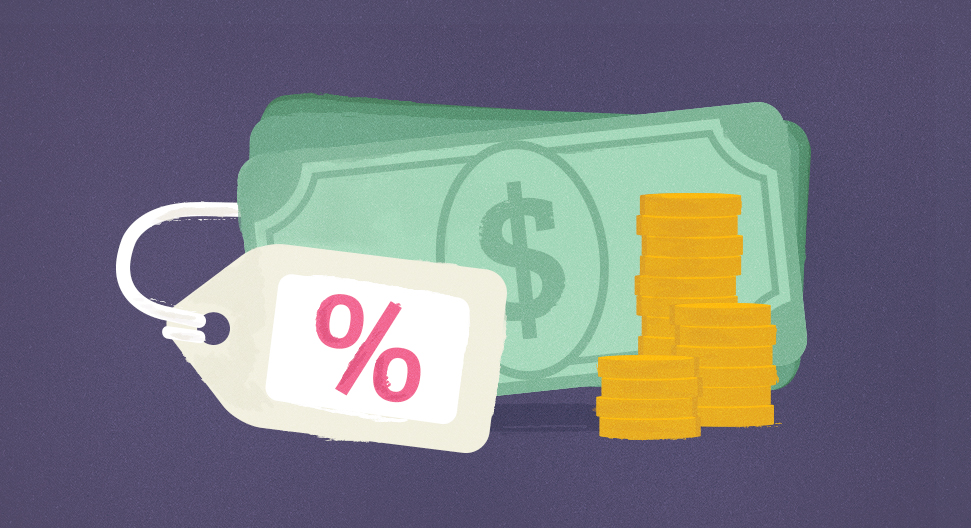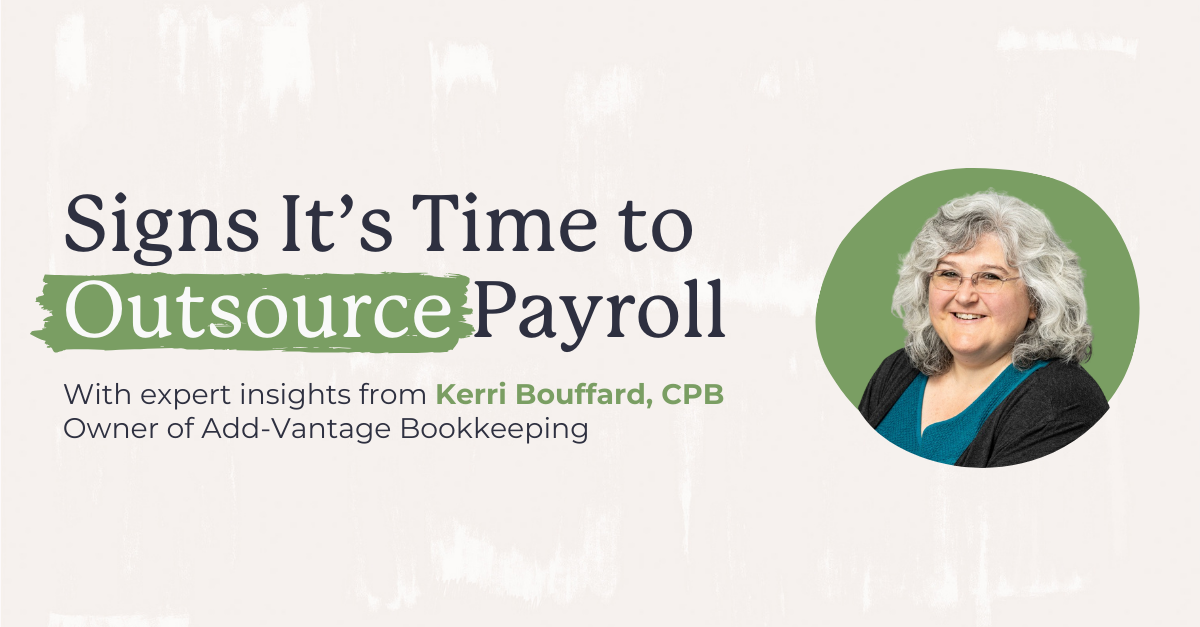Become an insider!
Get our latest payroll and small business articles sent straight to your inbox.
You’ve probably heard the term “working on commission” and have a general sense of what it means, but what is commission pay really? Whether you’re a business owner that’s considering this pay structure or not, it’s helpful to get to know what it is in case an employee asks about it. You may even decide it’s the type of pay structure that’ll work best for your business.
Within a commission pay structure, a company compensates its employees based on the revenue they generate for the business. By definition, it’s a fee paid to an employee for transacting a piece of business or performing a service. In simpler terms, the employee gets a portion of the money from a sale they made for the business.
Commission structures are most common in sales heavy industries, such as retail, real estate, insurance and the stock market. You’ll also find them used for teams of direct sales companies. Direct sales companies sell products or services directly to a customer, and there isn’t a storefront.
With this different pay structure comes different tax treatments for commissions versus other income types. If you’re running your own payroll, get to know and keep in mind the commission pay tax guidelines for your country, state, province and/or city. If you run payroll using online software, making sure it’s able to handle and calculate commission pay will make things simpler during your pay runs.
For instance, Wagepoint calculates all of the applicable taxes on the gross commission totals you provide (using the periodic tax method). As an employer, all you need to do is input the gross commission amount, and we take care of the rest, including all year-end reporting.
Gross commission pay calculation.
The way to calculate gross commission pay is pretty straightforward. Essentially, you take the commission rate and multiply it by the sale.
sales amount x commission rate = gross commission
As an example, say an employee lands a $40,000 sale and their commission rate is 5%. The employee’s gross commission for that sale would be $2,000.
Employers need to calculate a gross commission value for each employee depending on the different employment commission structures.
7 ways to calculate commission pay.
Keep those initial ideas of what commission pay is and how to calculate the gross amount in mind. Now, we’ll outline seven different ways you can include commission in your pay structure.
- Bonus Commission Pay
- Straight Commission Pay (Commission Only)
- Salary Plus Commission Pay
- Variable Commission Pay
- Graduated Commission Pay
- Residual Commission Pay
- Draw Against Commission Pay
1. Bonus Commission Pay
Bonus commissions are an opportunity to reward employees for their success. These bonuses are in addition to an employee’s established pay and are usually based on pre-established earning quotas.
Bonus commission pay can be awarded to individuals, teams or even company-wide for extraordinary performances. Here’s what a bonus commission might look like.
If the bonus commission was 5% of a huge $10,000 sale, the employee would receive a $500 bonus, minus all applicable taxes, in addition to their regular pay.
(sale amount x commission rate) + regular pay – taxes = employee’s earnings
This type of sales commission structure is common within startup organizations that want to reward high achievers and give the team a boost in morale.
Remember that any bonuses paid to an employee, even as a cash gift, are considered taxable and should be included within their total yearly earnings.
2. Straight Commission Pay (Commission Only)
Straight commission pay can also be referred to as commission only because it’s the only pay an employee earns from their work. There’s no base salary or hourly wage included in this pay structure.
All compensation is based on an agreed-upon percentage of sales. Companies can benefit from a straight commission pay setup because they don’t have to pay for anything unless an employee is generating business.
Say an employee brings in $50,000 of business in a month and their commission rate is 8%. They’d earn $4,000, minus all applicable taxes on their pay cheque.
(sales amount x commission rate) – taxes = employee’s earnings
This type of commission is most common within the real estate and auto industries.
3. Salary Plus Commission Pay
A salary with commission is the most common type of commission pay structure. In this case, an employee has a fixed salary base, but they also get commissions for their sales or performance.
This structure offers a stable pay cheque while also encouraging the employee to do well and make sales to earn more. The fixed salary is steady, but generally smaller because a big portion of the employee income is still determined by sales.
If an employee brings in $50,000 of business in a month and their commission rate is 4%, they’d be paid $2,000, plus their salary, minus all applicable taxes.
(sales amount x commission rate) + salary – taxes = employee’s earnings
This type of commission is most common within retail industries.
4. Variable Commission Pay
Variable commission pay simply means the commission pay is different based on the kind of sale.
With this setup, any easily made sales can be rewarded differently than harder-to-earn sales to encourage growth in specific markets. It can also be used to reward the sale of long-term contracts or highly desirable customers.
If an employee brings in $40,000 of regular business at a commission rate of 5% as well as $10,000 of highly desirable business at a commission rate of 15%, they’d earn $3,500, minus all applicable taxes.
((sales amount A x commission rate A) + (sales amount B x commission rate B)) – taxes = employee’s earnings
This type of commission is most common for businesses trying to break into new markets because the setup encourages and rewards specific types of sales.
5. Graduated Commission Pay
A graduated commission pay focuses on performance. A company can set up various tiers, and an employee gets paid the commission amount for the level of sales they reached.
This could look like 5% of the first $20,000 of sales, 10% of the next $20,000 of sales and 15% of any sales made above the $40,000 mark.
The actual commission percentage will increase incrementally at a predetermined rate as an employee reaches higher levels of sales.
As an example, if an employee brings in $50,000 of business in a month and their commission rate is 5% on the first $20,000 and 8% on anything above that amount, they’d receive $3,400, minus all applicable taxes.
((tier 1 sales amount x tier 1 commissions rate) + (tier 2 sales amount x tier 2 commission rate)) – taxes = employee’s earnings
This type of commission is most common for businesses that want to incentivize sales volume.
6. Residual Commission Pay
A residual commission pay structure is used when a company lands ongoing client accounts. With this setup, an employee will continue to receive commission on a sale as long as it continues to generate revenue. So instead of a one-time commission based on the initial sale, they’ll continue to earn as long as that client continues to do business with the company.
Residual commission has both pros and cons for sales employees.
Employees can benefit from this type of commission pay because, after a time, they’ll begin to build a steady commission income from their residual sales. On the flipside, losing a long-term sale can suddenly reduce an employee’s earnings by a significant amount.
If an employee brings in $50,000 of monthly business and their commission rate is a residual 5%, they’d be paid $1,000, minus all applicable taxes. This $1,000 pay would continue every month so long as the sale continued to bring in $50,000 of revenue each month.
(sales amount x commission rate) – taxes = employee’s earnings
This type of commission is most common for agencies, consulting firms and any businesses that prioritize long-term accounts.
7. Draw Against Commission Pay
With a draw against commission pay system, employees are advanced a predetermined amount that’s deducted from their commission on each following pay. This gives the employee some income while they work toward their sales quotas and commission goals.
After the draw amount is paid out of the commissions on the following pay, the employee is left with the remainder. If an employee is unable to make the draw amount in commissions, they’ll owe that amount back to the company.
Someone can take additional pay from the next set of commissions, but if an employee has a few bad sale cycles in a row, they can be left with significant debt.
If an employee brings in $50,000 of business in a month and their commission rate is 8%, they would be paid $4,000. The draw amount that they received in advance (example: $3,000) would be subtracted from the gross commission total, leaving an extra $1,000, minus all applicable taxes.
(sales amount x commission rate) – advanced amount – taxes = employee’s earnings
This type of commission is most common for businesses with lengthy or seasonal sales cycles.
Choosing the best commission pay structure for your business.
The different types of commission pay setups can be combined to create the perfect structure for your business. For instance, a salary plus commission structure can be specialized by also including a graduated or variable system.
Now that you know what commission pay is, it’s all about finding what works best for your business.
Further reading
- Employees paid by commission — Canada Revenue Agency
- Commissions — United States Department of Labor
Disclaimer: The advice we share on our blog is intended to be informational. It does not replace the expertise of accredited business professionals.
Updated: May 2023











